Related Tags
Froggy Bottom Guitars: “Our entire methodology is created around the concept of flexibility”
Nestled amid the beautiful Green Mountains of Vermont, Froggy Bottom Guitars crafts fine acoustic instruments using centuries-old woodworking techniques.
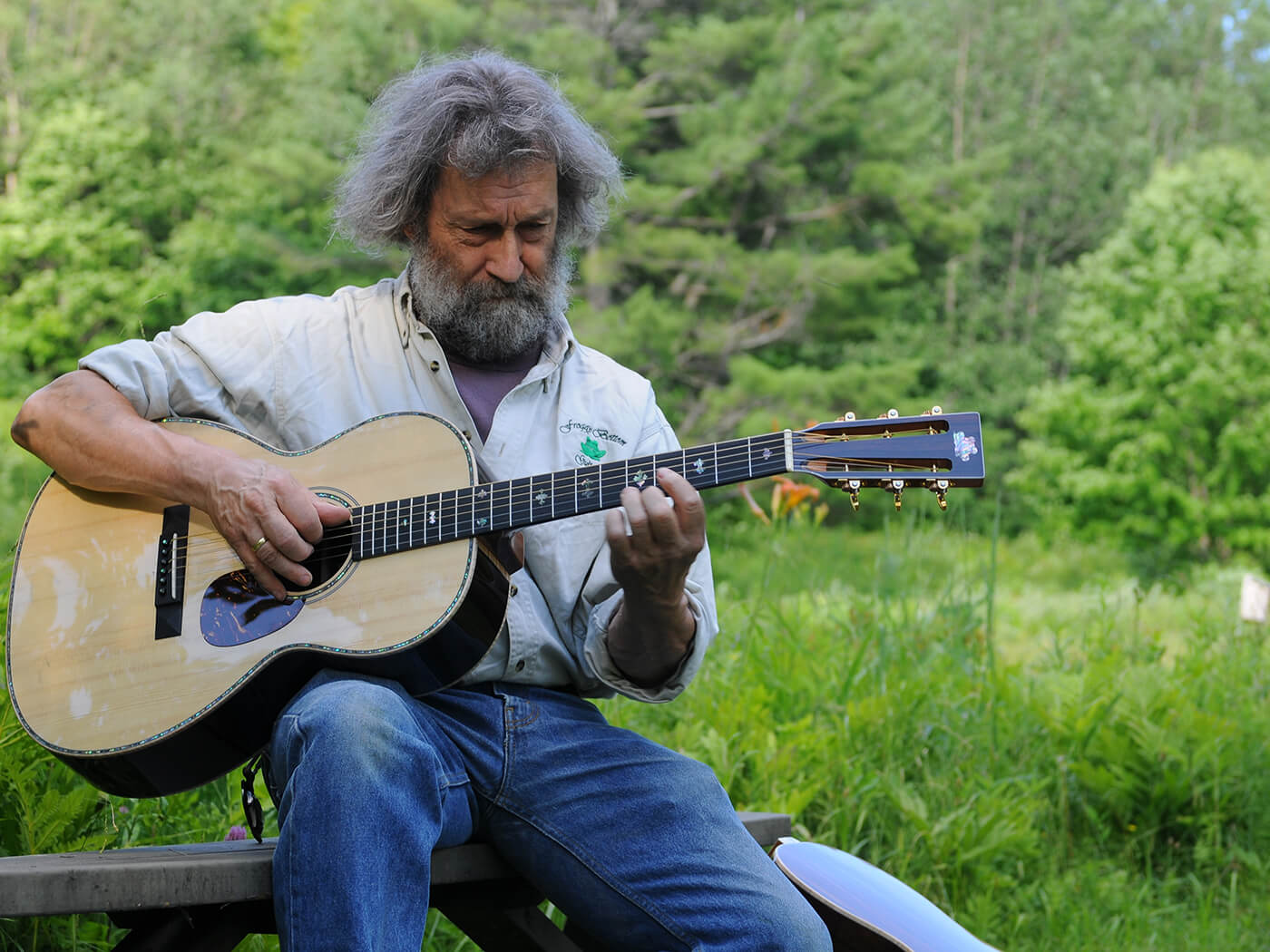
All images: Froggy Bottom Guitars
There’s no shortage of manufacturers working in the realm of guitars and related equipment that purport to produce ‘custom made’ goods, to work by hand, or to craft their wares the way it was done in the good old days. Tour the Froggy Bottom workshop, however, and speak to founder Michael Millard and his partner luthiers Eric Goodenough and Andy Mueller, and you really come away with a feel for what such terms should encompass.
- READ MORE: Shop Talk: Tom Bartlett of Bartlett Guitars
“Most of what’s always been referred to as ‘hand-made’ in the world of guitars really stretches the meaning of the phrase,” says Millard. “I mean, ‘Come on, guys!’ You know? You can say it all you want, but it doesn’t make it true.”
So, what does this down-to-earth, next-level ‘hand made’ entail? Step this way for a whiff of the wood chips.

Froggy Mountain High
This past October marks the 50th anniversary of Michael Millard’s entry into professional guitar making. And while he built his first Froggy Bottom guitar in his apartment on the Lower East Side of Manhattan, bending its hardwood sides on a homemade heat pipe fired by a gas flame, the maker has long been associated with the rural New England state of Vermont, which in fact was always Millard’s home, in the truest sense.
“I lived in Vermont as a boy,” Millard tells us, “and when I was 10 my dad took a position at Yale University teaching architectural design in the School of Art and Architecture, and I was effectively dragged kicking and screaming to Connecticut because of that change in his work. I was placated by the promise that we would get a small wooden sailboat, and arguably my favourite form of self-entertainment in those days was to be sanding and finishing wood.”
More than the sailing itself, it was working on the latter – and the company that he kept in the process – that introduced the young Millard to his calling. Hanging out and working in the boatyard at the edge of the university, which fed onto Long Island Sound, the youngster encountered a surprisingly helpful crowd of old salts, which, he says, “led to work in that yard, and being under the tutelage of a couple of truly old-world craftsmen.”
“One was in his latter 70s,” Millard explains, “and one, I think, was 81. And they took me under their wing, and taught me about woodworking and building and repairing wooden boats. I’ve always been, it seems, blessed that at every point in my life when I was at a crossroads in some way, someone showed up who was appreciative of me and my desire to learn about this stuff, and offered me guidance and opportunities.”

Hinted at in the latter is the guidance of acclaimed guitar maker Michael Gurian, the next master craftsman to take Millard under his wing when he hired the young woodworker to assist him in expanding the output of his Manhattan guitar workshop in 1970. For a time, Millard worked side by side at Gurian with another aspiring luthier named Thomas Humphrey, who has since become a world-renowned maker of classical guitars.
“A month after I went to work for him I was offered a job as his shop foreman,” Millard tells us. “I’m not sure I was well prepared for guiding other people in terms of operating a shop very well, but I was a pretty skilled woodworker at that time. It worked out very joyfully for me, and that was a launching pad for work in guitars.”
Free-form methodology
Part of what clicked between Millard and Gurian was the senior luthier’s free-form building technique. Gurian Guitars had recently shifted from building classical guitars to offering a range of steel-string instruments, but continued to produce these according to the classical methodology, a technique that perfectly suited Millard’s attitude toward woodworking.
“He built steel-string guitars, when I met him, in sort of a classical methodology,” says Millard. “And we built with a free-standing model of classical methodology, which puts the braced top, face down on a building stand or a board, and then the sides are added and the back goes on last. And this is the direct opposite of the construction methodology that most steel-string companies, who are actually manufacturers, follow. And that’s a critical element in terms of how our guitars function, building them face-down on a building board rather than the top goes on last.”
Allowing for some refinements over the years since his long-ago move back to Vermont, this is the approach that Millard and his Froggy Bottom colleagues have retained to this day, building guitars free-form, top-down, with no jigs or forms or other repeatable templates. Suffice to say it’s a lot of extra work, even compared to otherwise hand-made techniques that employ these aids. And the benefits?
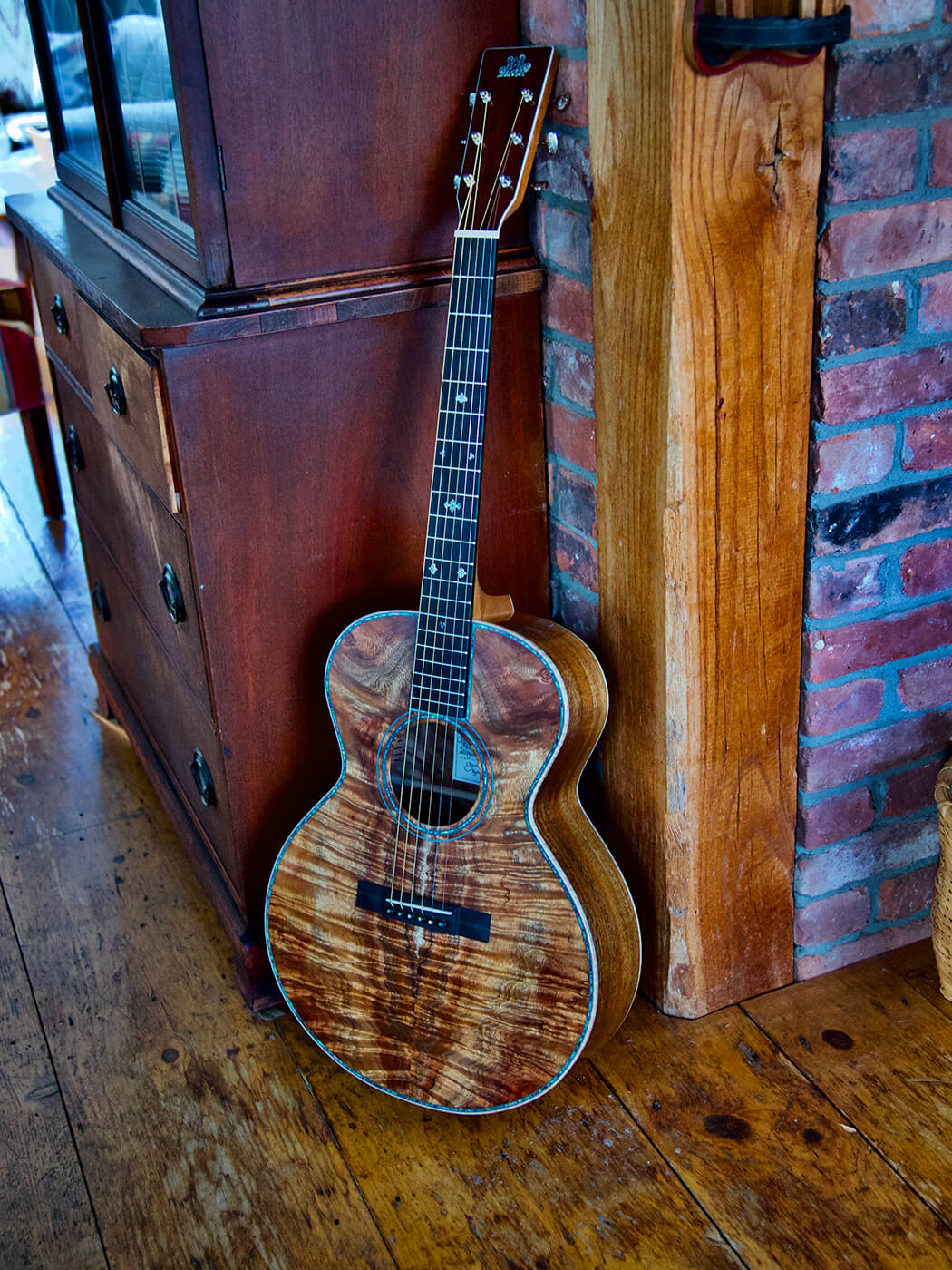
“Well, you’re talking about taste,” says Millard. “And when they say it’s better to do it in the fashion of the top goes on last, I say, ‘Okay, why?’ And I would become sort of a forensic pathologist in terms of examining their work and saying, ‘Okay, what’s the benefit of this?’ And the real benefit is in terms of appearance. It’s cosmetics.
“When you put the top on last and you look inside the guitar, the builders have been able to clean up the interior of the guitar that you are able to observe through the sound-hole, so it looks really nice and clean. I prefer to approach it from a question of function: when you put the back on last and you look through the sound-hole, you may actually see a tiny bit of glue here and there that you would not see following the other methodology.
“However, we can build a guitar – when we build it face-down – because it compresses the top somewhat and then when you take the strapping off the assembly, it rebounds. So, there’s a curvature to the top that’s possible, that allows a lighter build should you wish to achieve that, and a greater degree of strength via the structural integrity of the top that has some curvature to it.
“And so, we always look at the justification for a methodology based upon function, rather than upon appearance. Okay? Cosmetics are important, and everyone should do clean work. But justifying a fundamental choice in terms of methodology of construction based on ‘it looks a little bit nicer’ rather than ‘it works better’, for me, is BS.”
Eric Goodenough built his first complete Froggy Bottom guitar in 1982, then sandwiched in a 15-year career in wildlife management and conservation before returning to the fold in 2005. And given his broad yet oddly convergent career paths, he also finds added virtue in the company’s chosen building approach.
“To me,” says Goodenough, “being responsive to the materials results in a guitar that is itself responsive. Some might find our methods archaic, even simplistic. While we do ‘tool-up’ on occasion, we do so only in service to a better outcome without sacrificing our need to be responsive and attentive to the materials or task.
“The free-form process requires us to work in this way. It also allows us to have so much variation in service of meeting the player’s functional needs. I want the distance between my tool and my heart to be as short as possible. Jigging up everything, just because I can, takes me further away.”
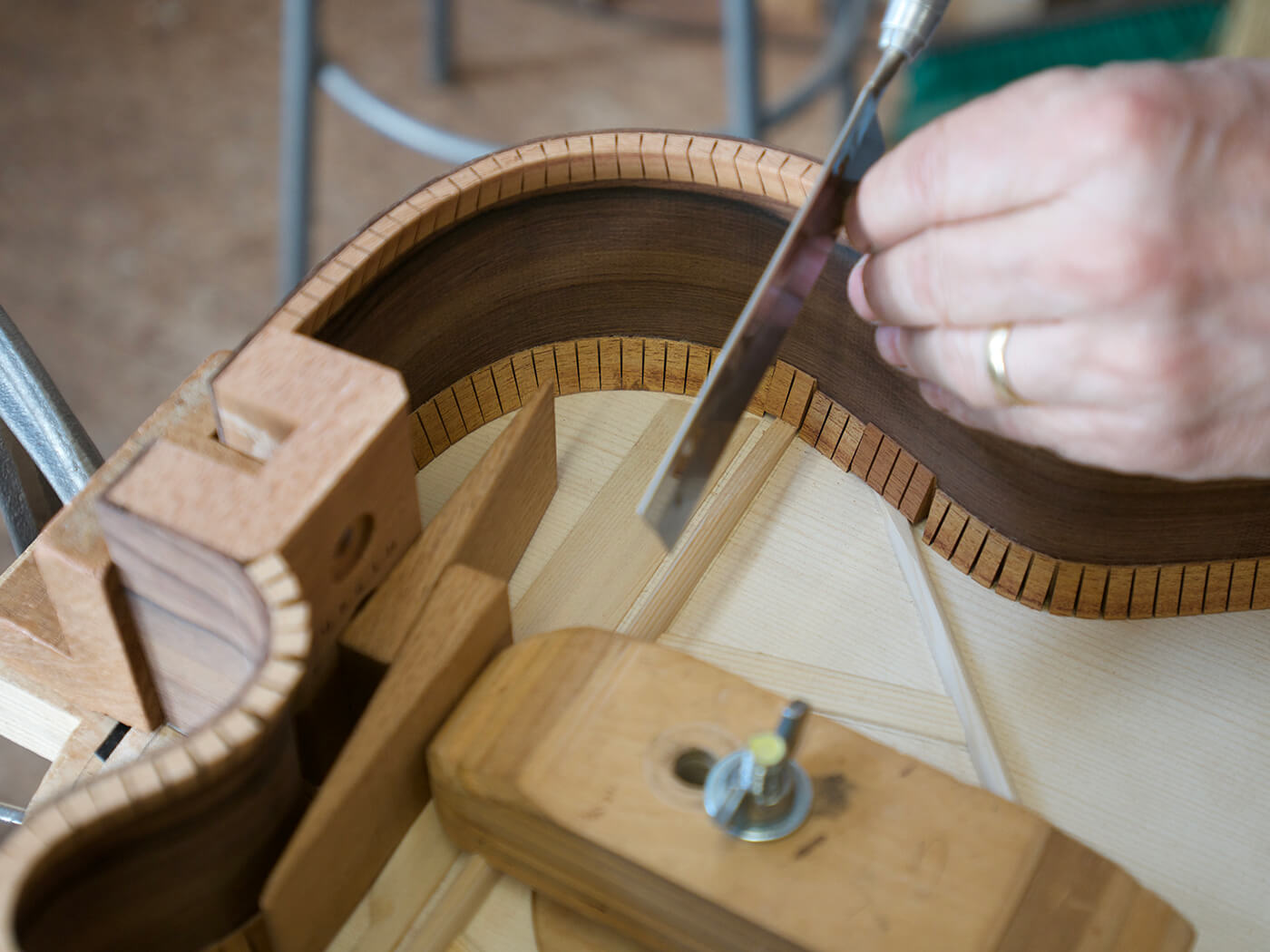
When custom truly… is
For Andy Mueller, who also expresses a sort of symbiotic relationship between the guitars and the place in which they are created, Froggy Bottom’s approach to guitar-building is so thoroughly infused in the results that it’s difficult to untangle the roots – though he’s willing to try.
“The methodology we use has consequences,” he says, “which are too numerous to count, really. There are three that stand out to me, though: the first is that we are free to try new things. When we want to build a guitar of a design we’ve never built before, all we have to do is draw the shape and specify the scale length and other design parameters. We don’t have to build a mould or retool anything. Which means we get to try a lot of things. We make a ridiculous number of models of guitars for a company our size. Of any size, really!
“We also have the ability to respond to the materials we use in a very personal way. It’s wood, not plastic or aluminium. It has personality, and we value that. Two guitars of a given model, built in the same year, the same month, even the same week, might have significant differences in brace proportions, placement, back arch, body depth, side thickness… and that ability to respond personally to the nature of a set of wood is necessary to building the best guitar possible. Which is what we’re aiming for.”
Mueller adds: “I have to believe that all of that freedom, to explore design ideas, to pay attention to the wood, ultimately serves our collective ability to connect a player with the specifications of the guitar they’re seeking, and then to build that guitar as envisioned.”
For Millard, his partners’ discussions of the Froggy Bottom methodology just further defines what a ‘custom guitar’ really is. Which is to say, there’s ‘custom’ and there’s custom – and when every guitar you make is essentially a one-off, intended to best serve the needs and desires of the customer who commissions it, the entire effort leans heavily toward the latter.
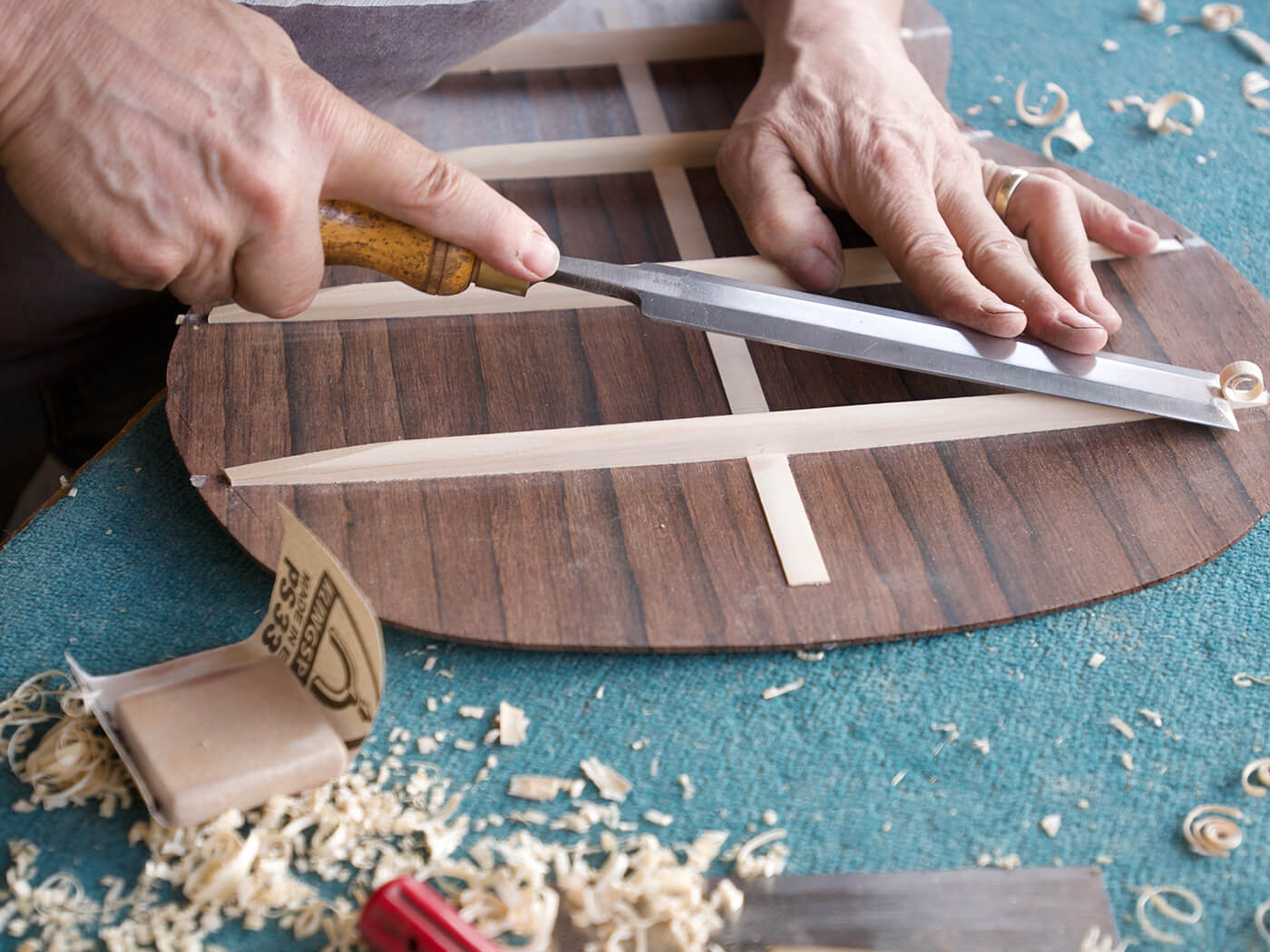
“Our entire methodology is created around the concept of flexibility,” Millard elaborates. “You know, there’s an awful lot of tossing around of the term ‘custom guitars’ out there in the world of steel-string guitars. And for the most part, what that means is, ‘We have a recipe and we make the same cake every time. What we’re changing is the frosting and the jimmies [sprinkles] on top of the frosting. It doesn’t have anything to do with the guitar’s function. But here, we dwell on function.
“We are capable, quite literally, of changing each and every component of any guitar we make in order to have that guitar higher-functioning in terms of how it serves its player as a tool. That’s what a guitar is: it’s a tool. For some people, it doesn’t matter much the nature of the tool, it’s just sort of a, ‘Hey, look at me. Aren’t I cool!’ sort of thing. And that’s great. If you just want to look at the frosting and the jimmies of the cake, buy one of their guitars. But if you’re looking for something wherein it’s a highly refined tool that’s going to serve your needs in terms of self-expression, then we think we offer a hugely viable alternative to what most other people do in their pursuit of quote-unquote ‘custom guitars.’”
In addition to the three luthiers with whom we’re speaking, the Froggy Bottom team includes the full- and part-time assistance of Chris Bavaria on finishing; Mark Burds-Masera on woodworking; Scott Ainslie, Barb Ackemann and Meg McCarthy on web editing, design and assistance; and Glenn Carson on the often-elaborate inlay work (in addition to the abalone ‘froggy profile’ logo, originally designed by Millard’s father, that’s inlaid on every headstock).
It probably goes without saying that the maker’s approach, and the limited size of the personnel, puts its own restrictions on the number of guitars Froggy Bottom can make, which currently totals just around 80 to 90 instruments a year between them. Even so, Millard and co. resolutely refute the elitist, ‘pay and wait’ formula that so many small-shop makers employ these days, which can lead to a years-long vigil as your place in the queue creeps along.
“We just don’t play that game,” says Millard with a congenial laugh. “We don’t take an order for a guitar that we cannot build within one year. That’s what we’ve always done. I’ve never subscribed to waiting lists. It really seems egotistical and unfair to both parties, for me to say, ‘Oh, I can’t build you a guitar for ten years, but here’s the price I’m going to charge you for it.’ Come on, that’s absurd! It really just does not hold water.
“And you know, what happens if a meteor falls out of the sky and hits me on the nose next week, and I’ve just taken a $20,000 deposit on a supposedly $40,000 guitar from you? It’s like, oh boy, everything is a mess!”
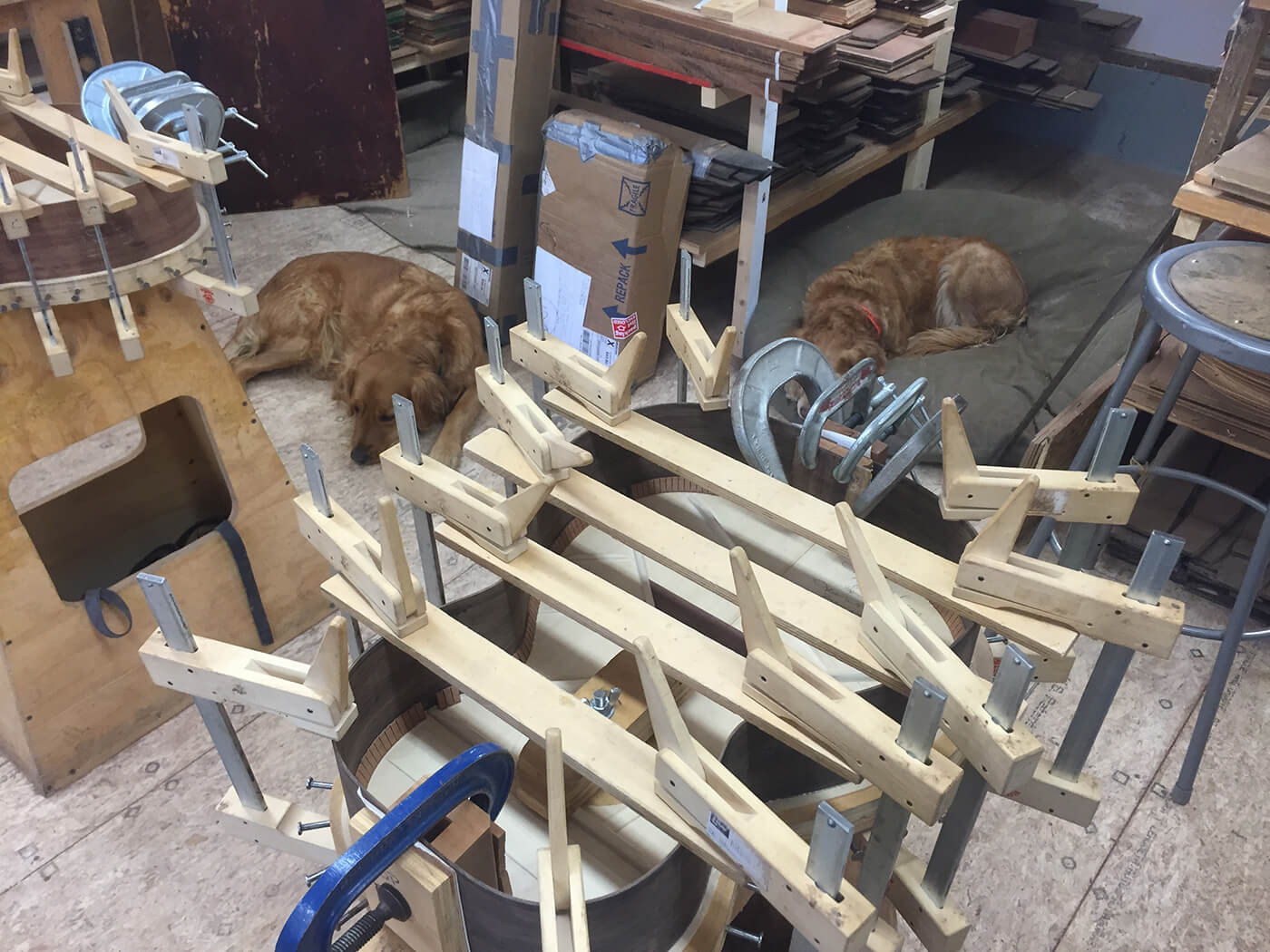
Green mountain state of mind
For many of its residents, Vermont is as much a state of mind as it is a place on the map. Its name was derived from French explorers’ observations of the ‘vert mont’ they encountered in the territory, which is some 170 miles inland from the Atlantic coast and bordering Canada to the north, which has since become known for a largely rural population that often expresses a deep appreciation for the environment, and for the outdoor life in general – it’s telling, and fitting, that more than one member of the Froggy Bottom team’s bios describes their form of habitation as ‘off the grid.’
And time and again throughout our conversations, it becomes apparent that there’s something in the way of life in this green slice of the northeastern corner of the country that is inseparable from the way this small shop makes its guitars.
Combine his degree in physics, passion for music, and a heartfelt love of environs surrounding Froggy Bottom’s home in Chelsea, Vermont (population 381), Andy Mueller, for one, finds it all coming together rather naturally.
“There are so many aspects of this work,” he says, “building instruments in the way that we do, that are perfectly calibrated to bring me joy. That’s the self-centred view. The connection to my lifelong passion for music, the opportunity for constantly deepening understanding of the way instruments work, the opportunity to live in a beautiful place and spend time every day communing with nature, not to mention the awesome people I get to work with… that’s a pretty good list.”

Likewise, Eric Goodenough finds his work with guitars “is informed by my surroundings, especially the natural ones. Our part of the world has far more dirt roads than paved. We watch the seasons come and go with a necessary eye on the weather, especially the humidity. But the calming effect of a walk in the woods right out my back door or the peacefulness of a sunrise or snowfall is part of the ongoing ‘presence’ that I feel is required to be attentive and responsive to the materials and to execute the work as well I know how. Being truly present for the work is paramount, and contributes to the feeling that I’ve put myself into this guitar—for the player.”
Fully concurring, Millard adds: “The work we do has always been more about what we want our lives to be like, rather than what we want our business to accomplish. What’s the horse and what’s the cart has always been very clear to us. And it’s not just me. We all love living where we live. It’s a place where people still listen to each other, even in fact argue with each other in order to learn something rather than to be right and have the other person be wrong.”
And ultimately this attitude – the interconnectivity between place and occupation, and the personal nature of the builder-client relationship – makes the Froggy Bottom experience as much one of person-to-person as it is of builder-to-wood-to-musician.
“My joy is always in meeting each player and saying, ‘What would be the perfect guitar for that individual?’” says Millard. “That’s always been a joy for me, and that in turn passes along to working with individuals who want a guitar from us, or think they might want a guitar from us. Regardless of their wants or needs in a guitar or their skill or musical style as a player, those are the people who have given me the opportunity to do what I do. So, those are things that I really, really love to this day. And they reflect back upon the fact that we treat every single guitar and every client as an individual. Everything starts over again. It’s a new job every time someone knocks on the door or the telephone rings.”
Visit froggybottomguitars.com for more.
